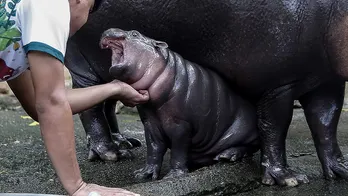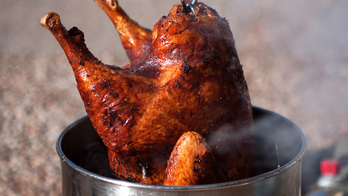Warning from wildlife officials about venomous snake in New Jersey: 'Never touch it'
Wildlife officials issued a warning in Somerset County, New Jersey, to be on guard for northern copperhead snakes after one of the species was seen last week in Watchung, a Garden State borough that's less than an hour from New York City.
The northern copperhead snake is described as having two shades of copper or a reddish-brown color.
It "inhabits rocky fields, berry thickets, woodlands and farmlands and may even be discovered among old mulch piles," said the N.J. Division of Fish and Wildlife in a "Snakes of New Jersey" publication.
HUNTER OF BELOVED ‘HOLLYWOOD BUCK’ IN VIRGINIA FACES JAIL TIME, LOSES HUNTING LICENSE FOR 25-PLUS YEARS
This species is one of two venomous snakes found in New Jersey, according to the same source.
"There have always been copperheads in the northern half of New Jersey and most people who live in copperhead areas coexist with them without conflict, often without even realizing they are there," said Tyler Christensen, a PhD candidate studying copperheads at Rutgers University’s Department of Ecology, Evolution and Natural Resources in New Brunswick, New Jersey.
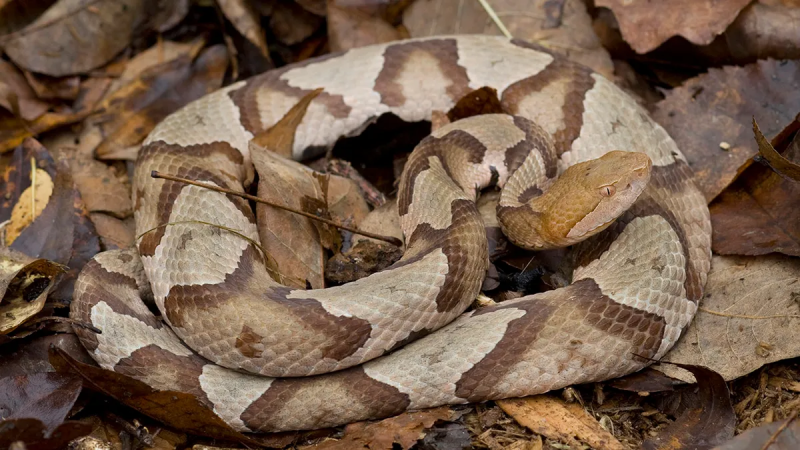
"There have always been copperheads in the northern half of New Jersey and most people who live in copperhead areas coexist with them without conflict, often without even realizing they are there." (iStock)
"The best thing a resident can do is learn how to tell copperheads apart from more common nonvenomous snake species — such as water snakes, milk snakes and garter snakes — and understand how to respond if they see a copperhead."
Although the warning was issued for New Jersey, the snakes are prevalent in other parts of the nation.
ULTRA-RARE ‘1-IN-3O-MILLION’ ORANGE LOBSTER RESCUED FROM NEW YORK SUPERMARKET IS RELEASED BACK INTO WILD
Here's a deeper dive.
What else should people know about copperheads?
Copperheads are much less dangerous than their reputation suggests, Christensen told Fox News Digital.
"They are surprisingly calm and docile, relying on their camouflage rather than their venom to defend themselves from predators and humans," he noted.
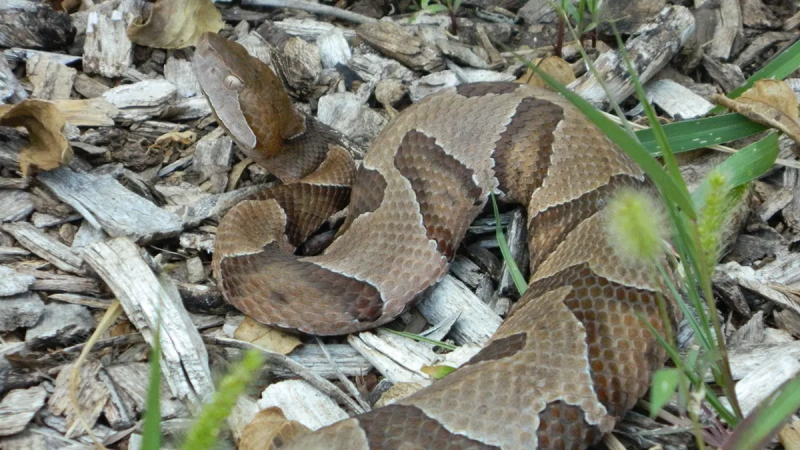
These snakes rely mostly on their camouflage to stay safe from predators and humans. "A bite is usually delivered as a last-resort defensive effort, and their venom is mild relative to most vipers." (iStock)
"A bite is usually delivered as a last-resort defensive effort, and their venom is mild relative to most vipers."
How do these snakes hide in the outdoors?
These snakes often blend into their surroundings.
"Copperheads are extremely cryptic (i.e. camouflaged) so they can be very difficult to spot against a background of leaves, brush and twigs," Scott L. Parker, PhD, professor and chair of the Department of Biology at Coastal Carolina University in Conway, South Carolina, told Fox News Digital.
"Don’t put your hands and feet anywhere where you can’t see them."
Parker warned people to avoid touching or approaching copperhead snakes if these animals are seen or encountered.
For more Lifestyle articles, visit www.foxnews.com/lifestyle
"Copperheads don’t want anything to do with humans," he said. They will not attack, and if left alone they will quickly try to escape."
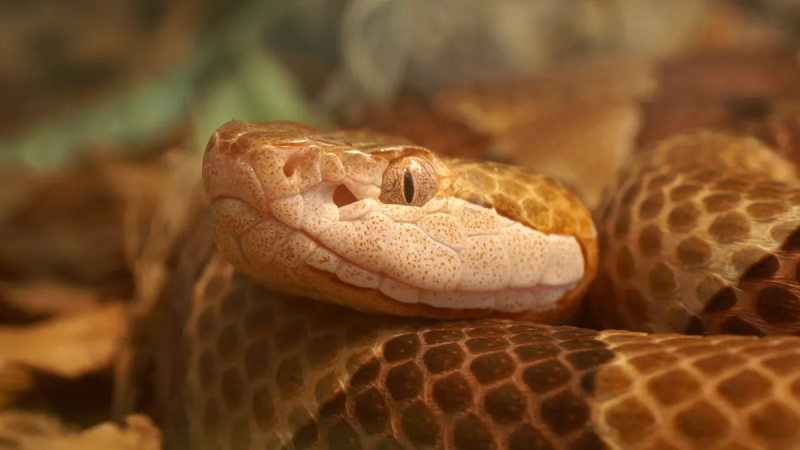
"Millions of people in the eastern U.S., especially in the Southeast, live in close proximity to copperheads and don’t even realize" that these snakes are nearby. (iStock)
"To avoid accidentally getting bit, don’t put your hands and feet anywhere where you can’t see them, and always wear shoes and use a flashlight when walking outside at dusk or after dark in the summer."
CLICK HERE TO SIGN UP FOR OUR LIFESTYLE NEWSLETTER
Parker also said, "Millions of people in the eastern U.S., especially in the Southeast, live in close proximity to copperheads and don’t even realize that they are close by."
What's the best way to stay safe?
To prevent possible encounters with copperheads, the University of Virginia provides these tips on its website:
- Wear boots when hiking and avoid open-toed footwear
- Use a flashlight at night when walking after sunset
- Know that banks of streams, rivers and lakes are common places where snakes can be found.
- Never touch or pick up a snake

"Most bites occur when people try to handle or move the snake by themselves." (iStock)
If you encounter a copperhead in a natural setting, in most cases you should simply leave it alone, Christensen at Rutgers University recommended.
"Most bites occur when people try to handle or move the snake by themselves," he added.
CLICK HERE TO GET THE FOX NEWS APP
"If you are bitten by a copperhead, don’t attempt to capture or kill the snake," he also said.
"Just get yourself to a hospital for treatment."
Disclaimer: The copyright of this article belongs to the original author. Reposting this article is solely for the purpose of information dissemination and does not constitute any investment advice. If there is any infringement, please contact us immediately. We will make corrections or deletions as necessary. Thank you.



